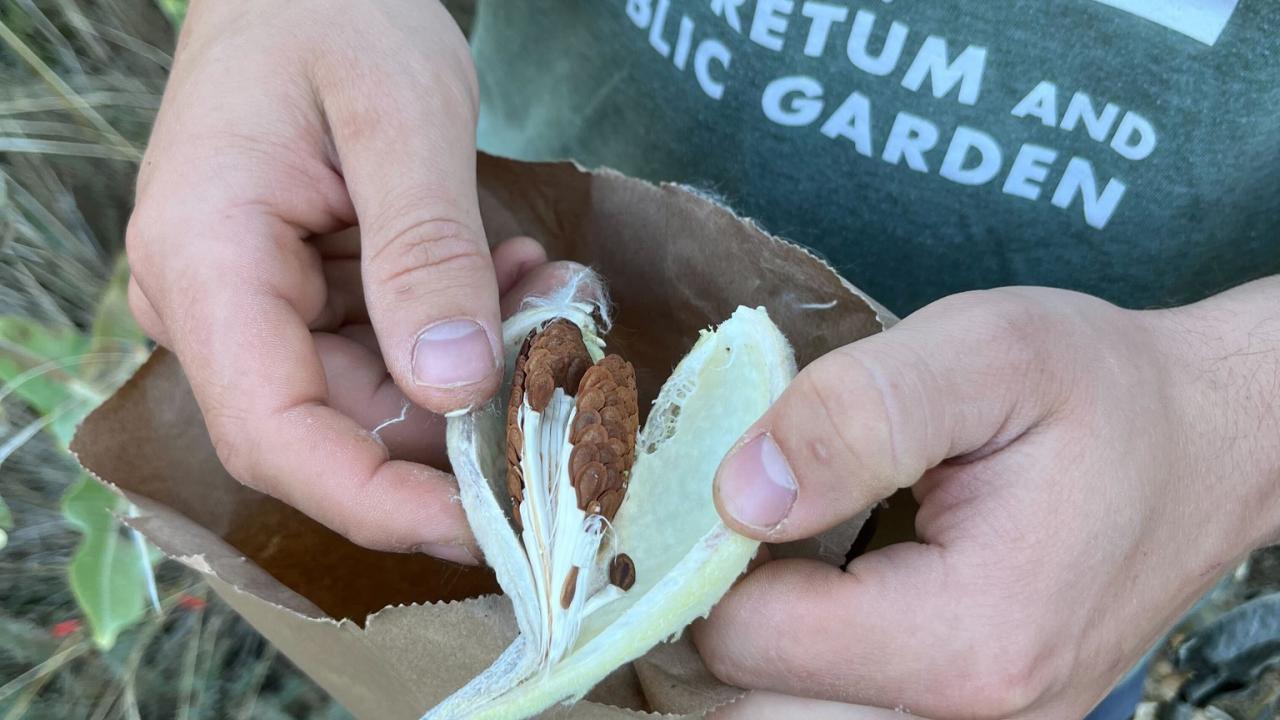
Early Fall: The Perfect Time to Harvest Seeds from Your Garden
🪴 👩🏽🌾 When to sow your seeds !
November is a good time to sow seeds, either in the ground or pots in a sheltered area. The expectation is that they will germinate over the winter, when conditions are right. Alternatively, home gardeners could wait and sow the seeds indoors in early spring, then pot them up as they grow large enough for transplanting outside in late spring or the following fall.
Fall is a busy season for Northern California gardeners with plant sales to attend, plantings to put in the ground, and many seasonal clean-up tasks to undertake. But another opportunity presents itself at this time of year, especially when unseasonably warm weather makes you hold off on transplanting: seed collecting!
Many garden favorites are easy to gather seed from, whether your intention is to propagate more plants, scatter sow and hope for the best, or share your bounty with friends. Freshly collected seed often has particularly high viability, making it a rewarding experience to try.
Here are few plants you might collect seed from in your own gardens at this time of year.
Reminder: Get permission before harvesting seeds on someone else’s property.
Milkweed
We have several species of plants in the Milkweed genus (Asclepias) that are native to California, and they are all deciduous perennials with beautiful, luminous clusters of white flowers. What’s more, milkweeds are the only larval host plant for the imperiled Monarch butterfly. In addition, the flowers are also extremely popular with native bees. It’s a great plant to spread around your garden or to give to friends to plant in their own yards. Milkweed seeds are flat, oblong pads attached to dandelion-like down that mature in fleshy pods. The ideal timing for seed harvest is when the pods have just started to split open; it is much easier to separate the seed from the down at this stage. However, the seed should be fully dried before planting.
Store your seeds in a cool, dry place until you are ready to plant them. As milkweed goes dormant in the winter, it is best to either sow the seeds in the garden and wait for them to germinate, or store them in a cool, dry place and sow them in containers in the spring as the weather warms up again.
Images: The narrow-leaf milkweed on the left is already popping out of its pod, making it harder to collect the seeds. The pod in the middle is at the perfect stage for easy collecting! The last image shows showy milkweed in full bloom.
Buckwheats
Our many native buckwheats (Eriogonums) are tough, drought tolerant, summer flowering, butterfly-supporting wonders! These plants have such attractive seed heads, it can be hard at first glance to tell whether you are looking at a fresh flower or not! Pinching off a floret and rubbing it between your fingers quickly reveals the true story: As the seed heads dry, the petals become dry and papery, and the seeds themselves form. They are very small, shiny, and pointed. To harvest larger quantities, crust the spent flower heads in a bowl or bucket and sift off the chaff. As you continue to agitate the materials, the heavier seeds will sink to the bottom and you can pinch off smaller pieces of petals. There is no need to remove all the chaff prior to sowing: a quick pass is sufficient.
Images: Believe it or not, the buckwheat on the left is ready for harvesting. Crushing the chaff (middle image) reveals the small, hard buckwheat seeds (right image).
Coyote Mint
This plant's beautiful purple flowers are a bumblebee favorite, and its fragrant leaves are a sensory delight! Another tough native that tolerates light shade and fits in well with other low water species, coyote mint (Monardella villosa) couldn’t be easier to harvest seed from. Simply pick a dried seed head and tap it upside down into a cup or bowl: you’ll see small, shiny black and brown seeds pop out! It’s easy to propagate too, as the seeds germinate readily with no special treatment. The seedlings grow slowly at first though: plan to sow more than you need if seeding directly in the garden, or start them indoors and transplant them out at a later stage.
Images: Inverting the seed heads of the coyote mint (left) to reveal its small seeds (middle). A bumblebee visits flowering coyote mint (right).
Yarrow
Yarrow (Achilliea millefolium) is another great perennial for a wide range of garden environments, from wet to dry, full sun to part shade. Yarrow is popular with beneficial insects and rewards you with blooms over a long season, especially with some supplemental water. The seeds are easy to collect: Just strip the dried flower heads off the branch and crush them. The silver seeds are so small that you may need to look closely to verify that they are there. Fortunately, the seeds germinate easily in containers as well as in the ground, and full separation of seeds and chaff is not necessary, especially if you plan on direct sowing your yarrow seeds in another area of the garden.
Images: A dried yarrow flower ready to be harvested for seed. Close up of the small silver seeds (middle). Yarrow in full bloom (left).
